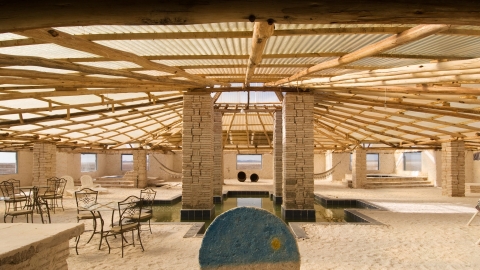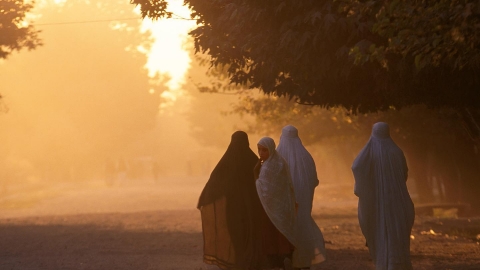Cano Cristales, the strange river
The Cano Cristales River is located in the Serrania de la Macarena National Park, part of Colombia's La Macarena National Reserve, which covers an area of 3,900 km2. Cano Cristales was discovered by explorer Andres Hurtado in 1980. This 100 km long river is one of the most spectacular natural wonders of Colombia and the world.
For most of the year, the river remains as clear as usual, but when summer comes, it turns into a brilliant and outstanding carpet. The riverbed is bright red, yellow, green, blue and black, intermingling to create an impressive scene. The best time to admire this beautiful natural scenery is from mid-May, but the most brilliant is from June to November. This phenomenon can last until the end of December, then return to its original blue color and will continue the cycle of changing colors the following year. It is this amazing phenomenon that has made Cano Cristales famous as the "rainbow river" or "river of five colors".
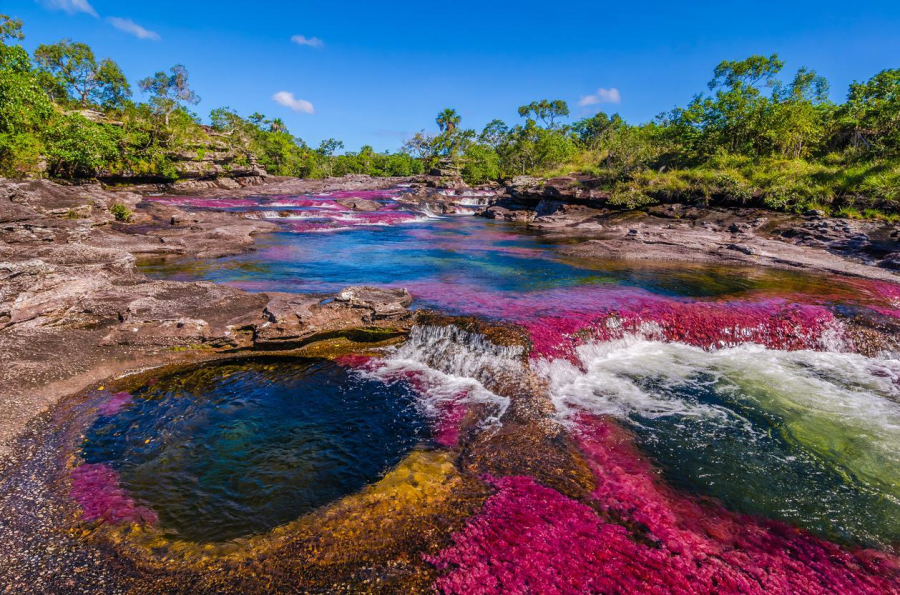
The color of this stretch of river comes from the aquatic plant Macarenia Clavigera, a species of plant endemic to the mountain range where Cano Cristales is located. Depending on the amount of water and light, the Macarenia Clavigera changes its color.
According to scientists, the Cano Cristales River is located in a region known as a “biodiversity hotspot”, where the Andes Mountains, the Amazon and Orinoco River basins converge – “home” to many endemic species of flora and fauna. The river also has many sections of layered rocks, creating beautiful waterfalls and enchanting rock holes.
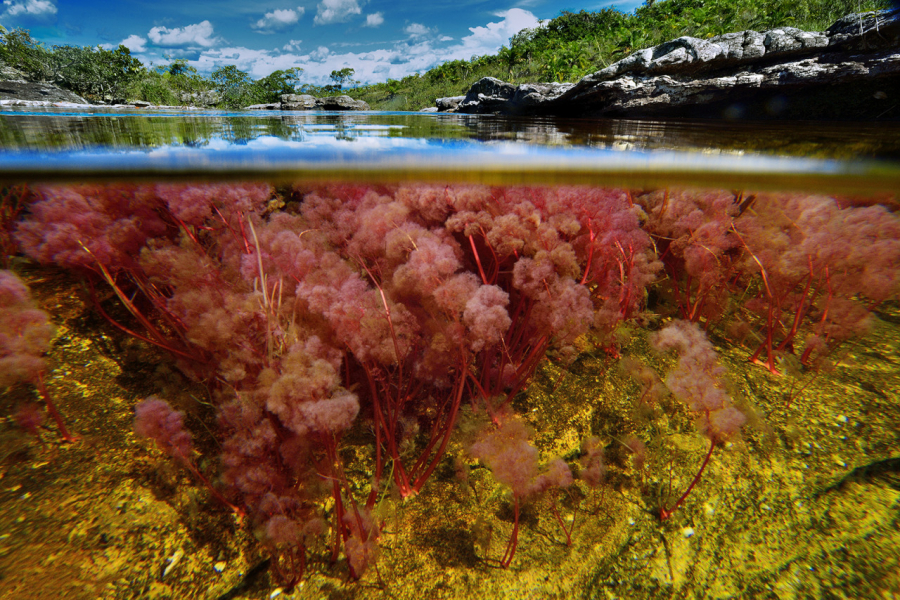

Because it is located in a remote area, almost completely isolated from the outside world, the river still retains its wild and poetic beauty. For many reasons, tourists were not allowed to visit the river in the past. In 2009, this area opened and attracted millions of tourists from all over the world. However, Cano Cristales only welcomes tourists from June to December, the rest of the time it will be closed to let the ecosystem "rest".
concerns from "overtourism"
Before the pandemic, thousands of tourists flocked to Colombia each year to see the rare sight of the Cano Cristales River, causing scientists to worry that the river could be threatened by “overtourism”.
Flavia Santoro, head of ProColombia, the National Tourism Board, said measures needed to be taken to protect the area from the influx of tourists. The government has already imposed strict restrictions on tourism infrastructure development in La Macarena, the small town closest to the park, and has limited the number of visitors to 200 a day.

Tourists have continued to flock to the site, despite environmental authorities closing it in December 2019 to protect the river. The closure was then extended due to the pandemic. Biologists say the 18-month absence of tourists until its reopening in June has been a huge benefit to the area. Faber Ramos, a ranger and ecotourism coordinator in the Orinoco region of La Macarena National Reserve, said the pandemic has had a positive impact on the river's health, with more animals being seen.
At peak times, Cano Cristales welcomes around 15,000 tourists a year, and the number is expected to continue to rise. Colombia has seen steady growth in annual tourist arrivals since signing a peace agreement with the FARC guerrillas in 2016, officially ending more than 50 years of civil war. Between 2017 and 2018 alone, the country saw a 38% increase in visitor numbers.
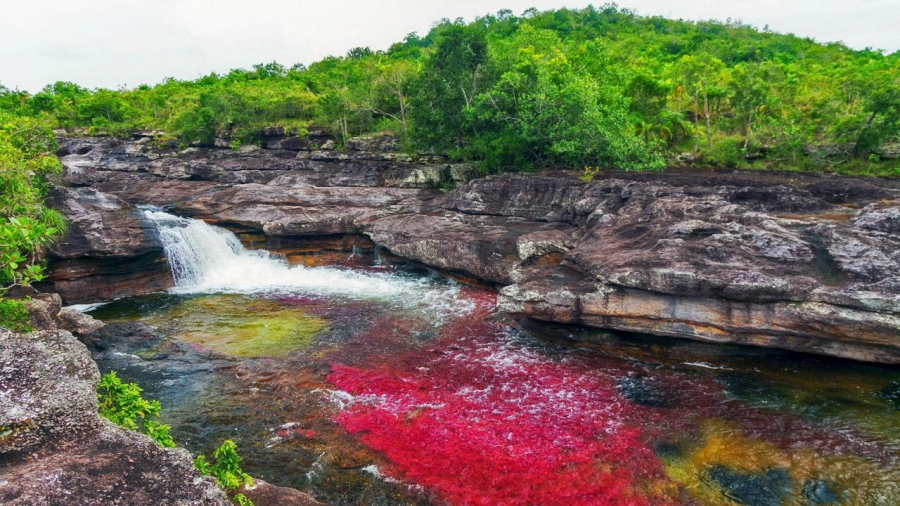

balance between tourism and nature conservation
International tourists and even Colombians have historically avoided Cano Cristales because it lies in an area controlled by FARC guerrillas. But in recent years, the increase in visitors to the river has been a boon to the tourism industry and the small towns around it. However, environmental problems have also begun to arise in a place that has been largely untouched for half a century.
“This region is a biodiversity hotspot,” said Carlos Lasso, a senior researcher at the Humboldt Institute, a biodiversity agency in Colombia. “It is a convergence of the biological elements of the Andes, Amazon and Orinoco basins, with many endemic and rare species of flora and fauna. At the same time, deforestation in the region is occurring at an alarming rate.”

Deforestation is one of Colombia’s most pressing problems. Every day, an area of forest the size of 40 football fields disappears, and La Macarena is no exception. Deforestation affects rainfall patterns and means the region receives less rain than before, which means the water in the Cano Cristales River turns from clear to a murky brown, affecting and possibly killing off the Macarenia Clavigera, the aquatic species that gives the river its “rainbow” color.
As Colombia opens its borders, the challenge for Cano Cristales is not to exceed the tourist capacity of the ecosystem. “The area is difficult to protect because it is so far from all the cities,” Lasso said. “Although the government is doing a good job, there are still some things that need to be improved, and the National Park should have more staff to protect and monitor the area.”
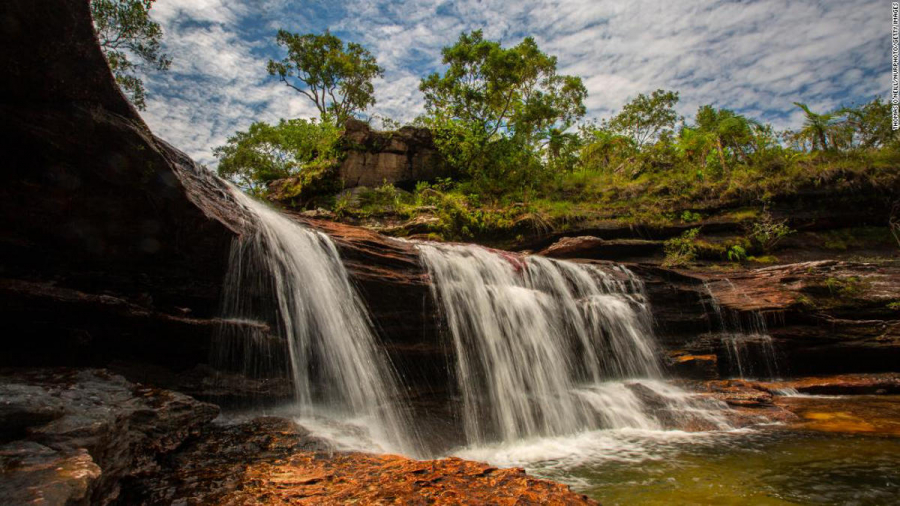
Restoring the “health” of nature's masterpiece
The pandemic has created an opportunity to reduce the number of visitors, restore and take care of the “health” of the National Park. Last June, Cano Cristales reopened with the creation of 10 new eco-tourism trails, with strict operating hours from 7 am to 4 pm.
Swimming areas are designated in the river. However, visitors are not allowed to wear sunscreen or insect repellent while swimming, as plants are sensitive to the chemicals in the products. The use of single-use plastics such as bags, bottles, straws, containers, plates and cutlery is also prohibited. The region’s tourism authorities also promote eco-friendly accommodation models for visitors, such as Wayabero Lodge, which conserves the ecosystem and develops sustainability programs for local communities.
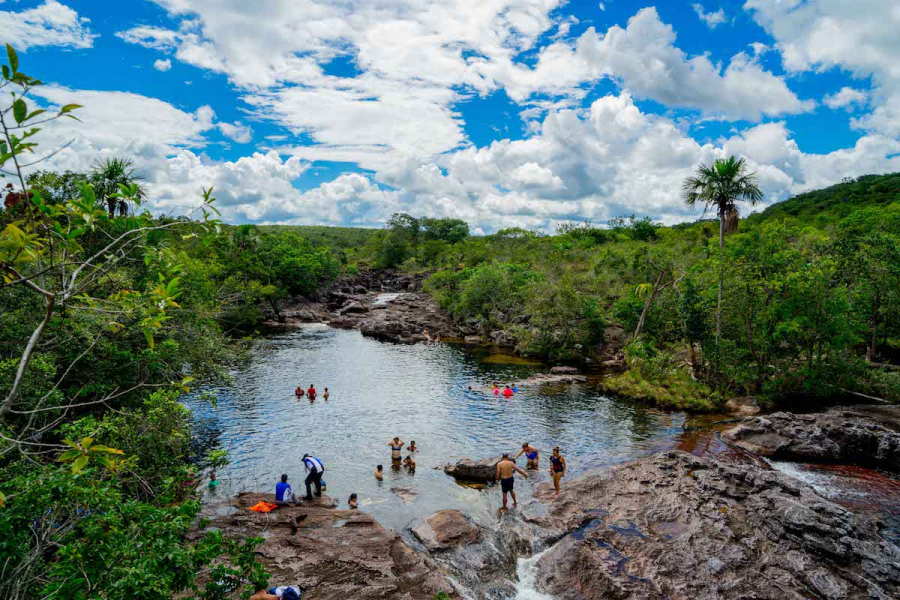

In addition to admiring the river's exotic scenery, visitors here also have the opportunity to observe the rich wildlife. Serrania de la Macarena National Park is home to more than 400 species of birds and many rare animals such as turtles, iguanas and aguilas - the national bird of Colombia.
Note for visitors
If you are planning to travel to Colombia and visit the Cano Cristales River once it becomes safe to do so, here are some things to keep in mind. You can visit the “river of five colors” on your own, but you will need to be accompanied by a government-licensed tour guide. The number of visitors per day is limited and most permits are issued to tour companies, so it is best to book your tour through an agency in advance.
Tour companies usually offer 2-4 day trips to the National Park's attractions. You can stay in the nearest town, La Macarena. Make sure you have plenty of cash, as ATMs in town are few and not always available. You will also need yellow fever and malaria vaccinations, which may require a certificate at La Macarena airport.






















